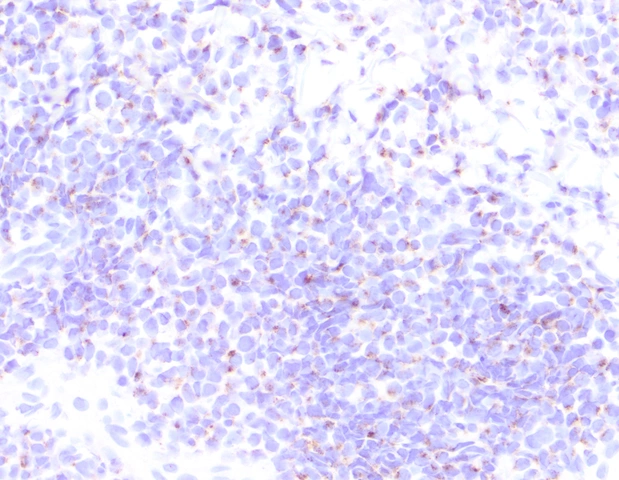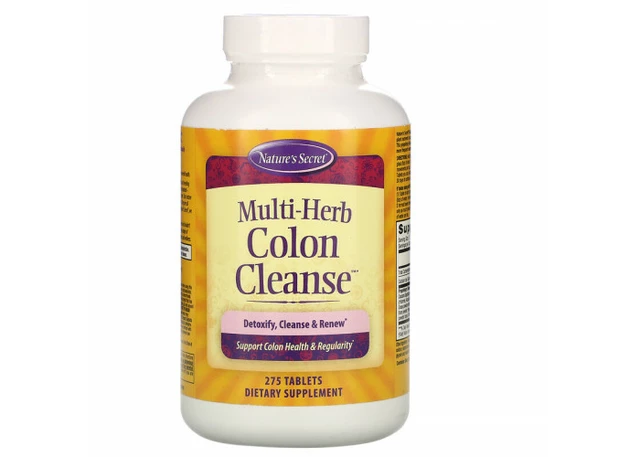 6
Oct,2025
6
Oct,2025
Antifungal Medication Comparison Tool
Select a medication to compare
Click on any of the buttons above to view detailed information about each antifungal medication.
When a fungal infection pops up, you want a treatment that’s fast, safe, and affordable. Diflucan (the brand name for fluconazole) is often the first drug doctors reach for, but there are several other azoles and oral antifungals that might fit your situation better. This guide walks you through the key differences, so you can decide whether fluconazole is the right pick or if an alternative deserves a closer look.
What is Fluconazole (Diflucan)?
Fluconazole is a triazole antifungal medication sold under the brand name Diflucan. It works by inhibiting the enzyme lanosterol 14α‑demethylase, which is essential for fungal cell membrane synthesis. First approved in the late 1980s, fluorozole quickly became the go‑to oral treatment for Candida infections and certain cryptococcal meningitis cases because of its excellent oral bioavailability and low toxicity profile.
How Does It Stack Up Against Other Common Antifungals?
Below are the main oral alternatives you’ll encounter in a primary‑care or specialist setting. Each belongs to the broader azole class, except terbinafine, which is an allylamine.
- Itraconazole is a broader‑spectrum azole that covers many molds, including Aspergillus species. It is known for its variable absorption and need for an acidic environment.
- Voriconazole offers the widest mold coverage among oral azoles, making it a first‑line choice for invasive aspergillosis. It has a higher incidence of visual disturbances and hepatotoxicity.
- Posaconazole is a newer broad‑spectrum agent, often reserved for prophylaxis in immunocompromised patients. Its newer tablet formulation improves bioavailability compared with the original suspension.
- Terbinafine works by inhibiting squalene epoxidase, a step earlier in the ergosterol pathway. It’s the drug of choice for dermatophyte infections such as athlete’s foot, but has limited activity against Candida.
- Ketoconazole was once widely used for systemic fungal infections, but oral use has been largely discontinued in many countries due to a high risk of severe liver injury.
Key Comparison Factors
To make an informed choice, look at these six dimensions. They’re the ones clinicians and patients most often discuss.
- Spectrum of activity - Which fungi does the drug hit?
- Pharmacokinetics - Absorption, half‑life, and tissue penetration.
- Safety profile - Common side‑effects and rare but serious risks.
- Drug‑drug interactions - Especially with CYP450 enzymes.
- Dosage convenience - Once‑daily vs multiple doses, need for food.
- Cost & access - Generic availability, insurance coverage, out‑of‑pocket price.
Fluconazole in Detail
Fluorozole’s hallmark is its high oral bioavailability (>90%) and a long half‑life of about 30hours, allowing once‑daily dosing for most indications. It reaches therapeutic levels in blood, CSF, and even ocular tissues, which is why it’s the preferred oral option for Cryptococcal meningitis. For uncomplicated Candida infections, a standard dose ranges from 100mg to 400mg daily, depending on severity.
Side‑effects are generally mild: headache, nausea, and a transient rash in roughly 5% of patients. Hepatotoxicity occurs in less than 1% and is usually reversible after stopping the drug. Because fluorozole is metabolized by CYP2C9 and CYP3A4, it can raise the levels of certain statins, oral contraceptives, and some anticoagulants.
Itraconazole: When You Need a Broader Mold Coverage
Itraconazole’s spectrum stretches beyond Candida to include many dimorphic fungi and some molds. However, its absorption varies dramatically - the capsule form requires an acidic gastric environment, while the oral solution is better absorbed but tastes unpleasant. Typical dosing is 200mg twice daily for 7‑14days for oral thrush, but up to 400mg daily for systemic infections.
Common adverse events: gastrointestinal upset, hepatobiliary enzyme elevation, and rare congestive heart failure in patients with pre‑existing cardiac disease. Itraconazole is a strong inhibitor of CYP3A4, leading to significant interactions with many cardiac drugs, immunosuppressants, and certain antihistamines.
Voriconazole: The Heavy‑Duty Mold Fighter
Voriconazole shines against invasive aspergillosis and other aggressive molds. Because it penetrates the CNS well, it’s sometimes used as a step‑down oral therapy after IV treatment. Dosing is weight‑based: 200‑400mg twice daily after a loading dose.
Its downside? Visual disturbances (the “blue‑light” phenomenon) affect up to 30% of patients, and photosensitivity can lead to severe sunburns. Liver enzymes climb in roughly 15% of users, and it’s notorious for many CYP2C19, CYP2C9, and CYP3A4 interactions.
Posaconazole: Prophylaxis for the Immunocompromised
Originally only available as an oral suspension, posaconazole now comes in delayed‑release tablets with ≥90% bioavailability. It covers Candida, Aspergillus, and Mucorales, making it the go‑to for hematologic‑malignancy patients undergoing chemotherapy.
Adverse effects are mild: mild GI upset and occasional liver enzyme bumps. Because it’s a CYP3A4 inhibitor, watch out for interactions with benzodiazepines, certain chemotherapy agents, and some antihypertensives.
Terbinafine: The Dermatophyte Specialist
Terbinafine’s strength lies in treating skin, nail, and hair fungal infections caused by dermatophytes. It reaches peak plasma levels in 2‑3hours and has a half‑life of about 36hours, allowing once‑daily dosing (250mg for nails, 250mg twice daily for skin).
Side‑effects are either mild (headache, GI upset) or serious but rare (hepatitis, taste disturbances). It doesn’t inhibit CYP enzymes, so drug‑interaction risk is lower than with azoles.
Ketoconazole: Why It’s Fallen Out of Favor
Oral ketoconazole was once a cheap, broad‑spectrum option, but reports of severe hepatotoxicity and adrenal suppression led regulators in the U.S., EU, and Australia to restrict its systemic use. It’s now only available as a topical agent for skin infections.
If you encounter a prescription for oral ketoconazole, double‑check the indication - newer azoles are safer and more effective.
Side‑by‑Side Comparison Table
| Drug | Spectrum (Major Targets) | Standard Oral Dose | Half‑Life | Common Side‑Effects | Major CYP Interaction | Typical Cost (AU$) - 14‑day course |
|---|---|---|---|---|---|---|
| Fluconazole | Candida spp., Cryptococcus neoformans | 100‑400mg daily | ≈30h | Headache, nausea, mild rash | CYP2C9, CYP3A4 (inhibitor) | ≈$15‑$30 |
| Itraconazole | Candida, Histoplasma, Blastomyces, some molds | 200mg BID (caps) - 400mg daily (solution) | ≈42h | GI upset, hepatotoxicity, CHF risk | Strong CYP3A4 inhibitor | ≈$25‑$45 |
| Voriconazole | Aspergillus, Candida, Scedosporium | 200‑400mg BID (after loading) | ≈6h | Visual disturbances, photosensitivity, liver enzymes | CYP2C19, CYP2C9, CYP3A4 inhibitor | ≈$80‑$120 |
| Posaconazole | Broad: Candida, Aspergillus, Mucorales | 300mg daily (tablet) | ≈35h | GI upset, mild hepatotoxicity | CYP3A4 inhibitor | ≈$120‑$180 |
| Terbinafine | Dermatophytes (skin, nail, hair) | 250mg daily (nails) or BID (skin) | ≈36h | Headache, taste changes, rare hepatitis | Minimal CYP interaction | ≈$30‑$50 |
| Ketoconazole (oral) | Broad (now limited) | 200‑400mg daily | ≈8h | Severe hepatotoxicity, adrenal suppression | Strong CYP3A4 inhibitor | ○ (restricted) |
When to Stick With Fluconazole
If your infection is limited to Candida (oral thrush, esophageal candidiasis, or uncomplicated vaginal yeast), fluorozole is usually the cheapest, safest, and easiest option. Its once‑daily dosing also improves adherence, especially for elderly patients or those on multiple meds.
For cryptococcal meningitis, fluorozole remains the only oral agent with proven CNS penetration, making it essential for step‑down therapy after an initial IV induction phase.
When an Alternative Might Be Better
Consider switching if any of these scenarios apply:
- Resistant Candida species (e.g., C. glabrata with fluorozole MIC≥64µg/mL). Itraconazole or vori‑cazole may overcome resistance.
- Invasive mold infection such as aspergillosis - vori‑cazole or posaconazole are the go‑to oral agents.
- Severe hepatic impairment - terbinafine’s minimal CYP involvement can be safer.
- Drug‑interaction burden - if you’re on a CYP3A4‑heavy regimen (e.g., certain anticoagulants or antiretrovirals), terbinafine or a lower‑interaction azole may be preferable.
Practical Tips for Patients
- Always take fluorozole with a full glass of water; food doesn’t affect absorption.
- Report any persistent yellowing of skin or eyes - it could signal liver trouble.
- If you’re on a birth‑control pill, add a backup method while on fluorozole and for 2weeks after stopping.
- Keep a medication list handy; many over‑the‑counter antifungal creams can be used alongside oral therapy without issue.
Bottom Line: Choose Based on Infection Type, Safety, and Cost
Fluorozole shines for uncomplicated Candida and cryptococcal infections, thanks to its simple dosing and low price. When you need broader coverage, better CNS penetration, or have a high‑risk drug‑interaction profile, reach for itraconazole, vori‑cazole, or posaconazole. And never overlook the niche but effective terbinafine for dermatophytes.
Frequently Asked Questions
Can I use fluconazole for a nail fungus?
Fluorozole works best on Candida species. Nail fungus is usually caused by dermatophytes, which respond better to terbinafine or itraconazole.
Is fluconazole safe during pregnancy?
Category C in the US; animal studies show risk, but human data are limited. Discuss with your obstetrician - many clinicians reserve it for severe infections only.
How long does it take for fluconazole to clear a yeast infection?
For oral thrush, symptoms usually improve within 2‑3days. Full eradication often requires a 7‑10day course.
What should I do if I miss a dose?
Take the missed tablet as soon as you remember, unless it’s almost time for the next dose. Then skip the missed one - don’t double up.
Are there any foods I must avoid while on fluconazole?
No strict restrictions, but grapefruit juice can raise fluorozole levels slightly; it’s safer to limit large amounts.






If you're wrestling with a stubborn Candida infection, remember that fluconazole's simplicity can be a real blessing. Its once‑daily dosing, cheap price, and solid safety profile mean you can stay on track without fuss. For patients worried about side‑effects, staying hydrated and monitoring liver enzymes keeps things smooth. Overall, it's a reliable first‑line choice that many clinicians trust.
Ah yes, the ever‑so‑glorious saga of Fluconazole, the darling of every self‑proclaimed antifungal enthusiast. One would think that after three decades of clinical use the drug would have finally settled down and stopped pretending to be the answer to every fungal woe. Instead, it struts around like a celebrity on a red carpet, basking in the adoration of budget‑conscious prescribers while smugly ignoring its own shortcomings. Let’s start with its spectrum: a narrow‑minded focus on Candida and Cryptococcus that would make a specialist blush. Sure, it clears a simple thrush in a weekend, but ask it to touch a mold‑induced sinus infection and it will politely decline. Its half‑life, a comfortable thirty hours, is often flaunted as a virtue, yet that very longevity can breed resistance when patients skimp on the full course. Resistance, dear readers, is the silent assassin lurking behind every missed dose, ready to turn a harmless yeast into a multi‑drug‑resistant nightmare. And let’s not forget the pharmacokinetic fanfare: superb oral bioavailability, which sounds impressive until you remember that the drug is metabolized by CYP2C9 and CYP3A4, making it a magnet for drug‑drug interactions. The classic example? A statin or an oral contraceptive that suddenly decides to linger in the bloodstream, thanks to fluconazole’s inhibitory charm. Side‑effects are touted as “mild” – a headache here, a rash there – but mild is a relative term when your patient is already juggling hypertension, diabetes, and a busy schedule. In the grand theatre of cost, fluconazole steals the spotlight with its $15‑$30 price tag, a figure that would make the big‑pharma lobbyists weep with joy. But cheap does not equal carefree; the low price encourages overprescription, which in turn fuels the very resistance we pretend to ignore. Meanwhile, the newer azoles sit in the wings, offering broader coverage, better CNS penetration, and pharmacodynamics that actually respect the complexities of modern fungal disease. Voriconazole dazzles with its mold‑killing prowess, while posaconazole quietly protects the immunocompromised without the drama of liver toxicity. If you’re still enamored with fluconazole, perhaps you’re nostalgic for the days when medicine was simple and the stakes were low. In reality, the choice of antifungal should be guided by infection type, patient comorbidities, and a healthy dose of clinical skepticism, not by the allure of a cheap, over‑hyped pill.
Behind every pharmacy shelf lies a network of interests that rarely prioritize patient well‑being over profit. The promotion of fluoro‑zole as the go‑to oral antifungal conveniently sidesteps the fact that its manufacturer funds many of the guideline panels that dictate its use. While clinicians applaud its low price, the hidden cost is the gradual erosion of drug efficacy as resistance silently spreads. A truly ethical approach would question why we keep re‑prescribing the same molecule year after year without exploring alternatives more aggressively. We must remain vigilant that our treatment choices are not merely the product of a well‑orchestrated campaign masquerading as clinical necessity.
Your summary of fluconazole’s dosing schedule is spot‑on, and the suggestion to monitor liver enzymes aligns perfectly with best practice. Just a tiny tweak: it’s “once‑daily” rather than “once a day” for consistency with medical literature. Overall, the tone encourages patients to stay informed without overwhelming them, which is exactly the right balance.
In the context of pharmacodynamic stewardship, fluconazole’s modest fungistatic activity against Candida spp. is complemented by its remarkable volume of distribution, which approximates 0.6 L/kg, facilitating tissue penetration even in sanctuaries such as cerebrospinal fluid.
From a pharmacogenomic perspective, polymorphisms in CYP2C9 can modulate plasma concentrations, necessitating dose adjustments in populations with reduced metabolic capacity, a consideration often overlooked in low‑resource settings.
Moreover, when counselling patients from diverse cultural backgrounds, emphasizing the importance of adherence without concomitant alcohol intake can mitigate idiosyncratic hepatotoxicity, especially in regions where traditional remedies are prevalent.
The cost‑effectiveness analysis consistently places fluconazole at the lower end of the spectrum, but decision‑makers should weigh this against the long‑term economic burden of emerging azole‑resistant strains.
Thus, a nuanced, culturally sensitive algorithm that incorporates susceptibility data, host factors, and local resistance patterns will yield optimal therapeutic outcomes.
The article reads like a sponsored brochure, glossing over the ugly truth that fluconazole’s popularity is engineered by a shadowy alliance of generic manufacturers. While it boasts cheapness, the hidden agenda is to keep physicians locked into a cycle of cheap repeats while newer, more effective agents are marginalized. Don’t be fooled by the glossy tables; the side‑effect profile may be mild, but the long‑term ecological impact on fungal flora is disastrous. If the goal is truly patient safety, we need to break free from this manufactured consensus and explore broader‑spectrum options.
It’s almost tragic how a drug that once saved lives is now reduced to a cheap corner‑store pill. Patients think it’s harmless, but the silent liver warnings linger like a bad spoiler. When the next infection strikes, you’ll wish you had a stronger ally in your medicine cabinet. Don’t underestimate the drama of a fungal infection.
One must question the epistemological foundations upon which fluconazole’s ubiquity is built, for it is the darling of a pharmaceutical oligarchy that thrives on mediocrity. The elite circles of drug development quietly relegate superior azoles to the shadows, preserving the status quo of profit over progress. Such manipulation is evident in the way guideline committees, populated by industry‑tied experts, champion a molecule that is, at best, a blunt instrument. The resulting echo chamber reinforces a narrative that cheapness equates to adequacy, an axiom unacceptable to the discerning clinician. Awakening from this collective illusion requires a radical re‑evaluation of our therapeutic dogma.
Fluconazole typically costs $15–$30 for a two‑week course, making it one of the most affordable systemic antifungals. Its once‑daily dosing and low toxicity profile contribute to high adherence rates in outpatient settings.
Fluconazole isn’t the universal cure.
The table nicely summarizes key differences, but remember that real‑world decisions also hinge on patient preferences and local resistance patterns 🙂.
While fluconazole remains a solid first‑line for uncomplicated Candida, the newer azoles deserve a place in the conversation when dealing with resistant strains.
Balancing cost, efficacy, and safety will always be the clinician’s tightrope walk.